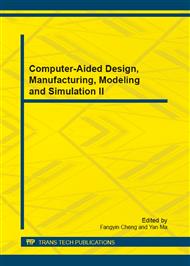p.311
p.317
p.322
p.327
p.331
p.336
p.341
p.346
p.351
Task Allocation of Multi-Robot Systems Based on a Novel Explosive Immune Evolutionary Algorithm
Abstract:
To solve the task allocation of multi-robot systems, a novel explosive evolution - based immune genetic algorithm (EIGA) is presented. On the basis of the immune genetic algorithm (IGA), the population number of EIGA is increased quickly through explosive evolutionary mode, and then the better individuals are selected through the comparison of allelic genes, which can improve the population quality with the premise of ensuring the population diversity, and enhance the search speed and search precision of EIGA. Compared with the IGA and genetic algorithm (GA), the simulation results indicate that the proposed EIGA is characterized by quick convergence speed, high optimization precision and good stability, and the tasks are allocated rationally and scientifi-cally which realizes the task cooperation of multi-robot systems well.
Info:
Periodical:
Pages:
331-335
Citation:
Online since:
December 2012
Authors:
Price:
Сopyright:
© 2013 Trans Tech Publications Ltd. All Rights Reserved
Share:
Citation:


